"Faith"
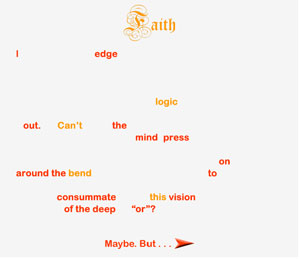
by Robert Kendall
"Faith" is a kinetic poem that reveals itself in five successive states. Each new state is overlaid onto the previous one, incorporating the old text into the new. Each new state absorbs the previous one while at the same time engaging in an argument with it. The gradual textual unfolding is choreographed to music. The structural constraints that enable this multilayer textual overlay constitute a born-digital formal alternative to such traditional structures as the sonnet or villanelle.
This work can be accessed at Word Circuits.
"Red Lily"
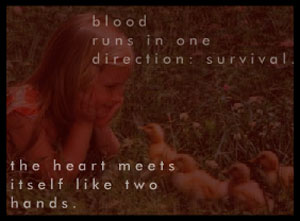
by John Kusch
"Red Lily" is a Flash poem divided into three musical movements that address the pain of lost love. Visual symbols, like a child playing with ducklings and a calla lily, juxtapose innocence and death, while the sound of the tolling bell coupled with textual clues of blood and needles emphasize.
This work can be accessed at Red Lily.
"Amor De Clarice"
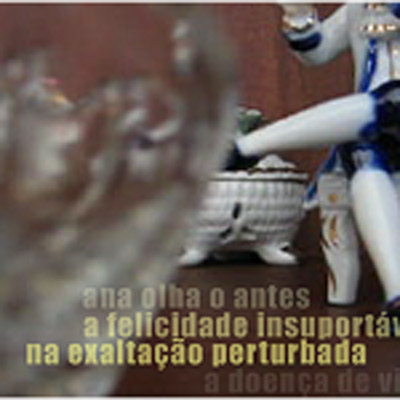
by Rui Torres
Following Genette's forms of paratextuality, the process of quoting or re-writing
in this poem involves a hypotext - the antecedent literary text (Clarice Lispector's "Amor") - and a
hypertext, that which imitates the hypotext (the poem "Amor de Clarice"). Both hypotext and hypertext were performed and recorded by Nuno M. Cardoso, and later transcribed within Flash, where the author completed the integration of sound, animation, and interactivity. Following the hypotext/
hypertext ontology, there are two different types of poems. In half of them (available from the main
menu, on the left), the main poem (the hypertext) appears as animated text that can be clicked and
dragged by the reader, with sounds assigned to the words. In these poems, the original text (the
hypotext) is also present, as a multilayered, visually appealing, but static background. The sound for these movies was created by Carlos Morgado using recordings with readings of the poem. In the other half of the poems (available from the main menu link on the right), the same animated hypertext/poem is present, but the hypotext in the background of the previous is replaced by video frames, animated and manipulated by Ana Carvalho. The sound files for these movies was designed by Luis Aly.
This work can be accessed at Amor de Clarice.
"Loss of Grasp"
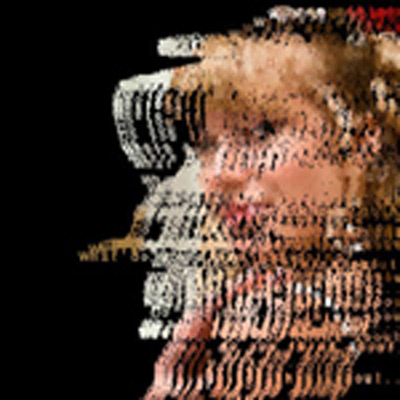
by Serge Bouchardon and Vincent Volckaert
"Loss of Grasp" is a digital creation about the notions of grasp and control. When do we feel we have a grip on our life or not ? Six scenes feature a character who is losing grasp. At the same time, this play on grasp and loss of grasp mirrors the reader's experience of an interactive digital work.
The piece requires headphones (or loudspeakers) and a webcam (for the fifth scene).
The interaction with the piece lasts about 10 minutes.
Visit
Loss of Grasp.
"Separation"
by Annie Abrahams
"Separation" is an interactive piece that reflects some of the physical and psychic disorders that result from intensive use of a computer. The text was written under the effects of Repetitive Strain Injury (RSI), which also functions as a metaphor for what happens to a writer (or 'cyborgauthor') who cannot create without, and has no identity apart from, the machine. The paradox is that separating from the computer is painful, but to write with it again is painful as well. Separation / Séparation has to be read at a very slow pace that, when not respected, collapses the text, with the result that the reader must perform a set of exercises as physical penitence. These exercises interrupt the reader from Separation / Séparation's literary text and thus strangely protect her against RSI. The game and dialogue among artist, machine, and reader facilitates a general reflection on the role of the body in processes of reading and writing.
This work can be accessed at
Separation.
"Strange Rain"
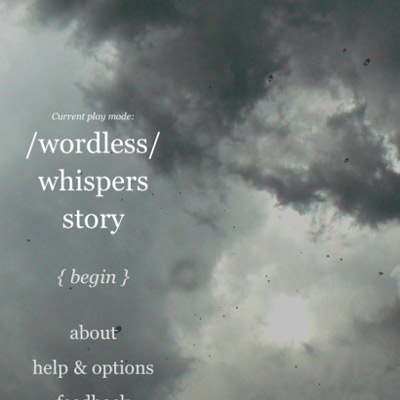
Erik Loyer
"Strange Rain" turns your iPad into a "skylight on a rainy day." You can play Strange Rain in four different modes. In the wordless mode, dark storm clouds shroud the screen, and the player can touch and tap its surface, causing columns of rain to pitter patter down upon the player's first-person perspective. The raindrops appear to splatter on the screen, streaking it for a moment, and then slowly fade away. Each tap also plays a note or two of a bell-like celesta.The other modes build upon this core mechanic. In the "whispers" mode, each tap causes words as well as raindrops to fall from the sky.The "story" mode is the heart of "Strange Rain." Here the player triggers the thoughts of Alphonse, a man standing in the rain, pondering a family tragedy.And finally, with the most recent update of the app, there's a fourth mode, the "feeds" mode. This allows players to replace the text of the story with tweets from a Twitter search, say the #MLA12 hashtag.
This work can be accessed at Strange Rain.
"Public Secrets"
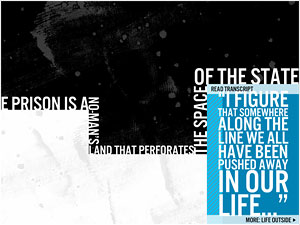
by Sharon Daniel & Erik Loyer
The expansion of the prison system is possible because it is a public secret - a secret kept in an unacknowledged but public agreement not to know what imprisonment really means to individuals and their communities. As the number of prisons increases, so does the level of secrecy about what goes on inside them. The secret of the abuses perpetrated by the Criminal Justice System and Prison Industrial Complex can be heard in many stories told by many narrators, but only when they are allowed to speak. After a series of news stories and lawsuits documenting egregious mistreatment of prisoners in 1993, the California Department of Corrections imposed a media ban on all of its facilities. This ongoing ban prohibits journalists from face-to-face interviews, eliminates prisoners' right to confidential correspondence with media representatives, and bars the use of cameras, recording devices, and writing instruments in interviews with media representatives. Women incarcerated in California are allowed visits only from family members and legal representatives. Inmates are not allowed access to computers, cameras, tape recorders or media equipment of any kind. Such restrictions
preserve the public secret. For the past three years, I have visited the Central California Women's Facility [CCWF] as a legal advocate. I work with a non-profit, human rights organization, Justice Now (http://jnow.org/). Together we have been documenting conversations with women prisoners at CCWF, the largest female correctional facility in the United States in an effort to unmask the well known, yet still secret injustices that result from our society's reliance on prisons to solve social problems. Given the
ban on conversations with the media, I would not have had access to the women who have contributed to "Public Secrets" without the support of Justice Now. As a "legal advocate" I am allowed to record my conversations with the women and solicit their stories, ideas, and opinions.
This work can be accessed at Public Secrets.
"Connected Memories"
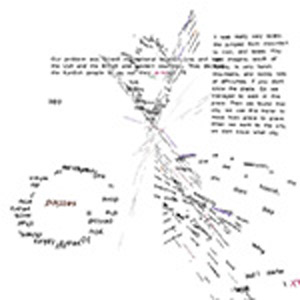
by Maria Mencia
"Connected Memories" is an interactive piece, which consists of a series of extracts from interviews of refugees living in London and the connection between them. They are compiled in a database and linked by common key words. To represent the fractured realities and the formations of connected memories, the viewers need to interact with the piece by clicking on the coloured activated 'common keywords' in order to generate extracts of narrations from the different participating refugees. The work could be launched from here or through this anthology.
"The Last Performance"
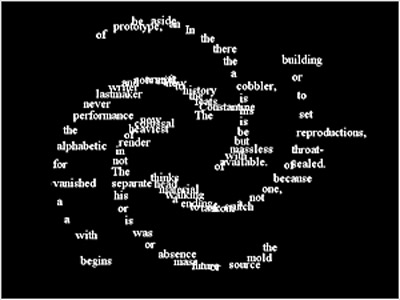
by Judd Morrissey
"The Last Performance" [dot org] is a constraint-based collaborative writing, archiving and text-visualization project responding to the theme of lastness in relation to architectural forms, acts of building, a final performance, and the interruption (that becomes the promise) of community. The visual architecture of "The Last Performance" [dot org] is based on research into "double buildings," a phrase used here to describe spaces that have housed multiple historical identities, with a specific concern for the Hagia Sophia and its varied functions of church, mosque, and museum. The project uses architectural forms as a contextual framework for collaborative authorship. Source texts submitted to the project become raw material for a constantly evolving textual landscape.
This work can be accessed at The Last Performance.
"For All Seasons"
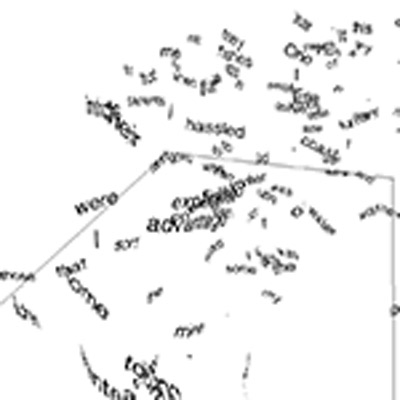
by Andreas Müller
"For All Seasons" is work for mobile devices about memories, seasons and using the elements of the textual representation of the memory to create an interactive one. This is the result of over a year of late nights and weekends and the desire to completely disregard implementation and my current skill level when thinking up the concept for a piece. Naturally much of the time was spent scratching my head and had I done it again now I would probably finish it in a much shorter time, but this is also a reason why I wanted to do it, the next time I make something I might get that extra bit closer what is in my head. You know what they say about aiming for stars and hitting treetops.
This work can be accessed at For All Seasons.
"V:Vniverse"
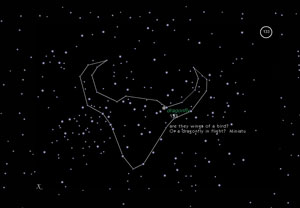
by Stephanie Strickland
"V: Vniverse" is a textual instrument for exploring a sequence of poems that also appear in a double invertible book. Navigation/performance possibilities provide a micro texture of interplay between patterns and their activation, both within the alphabetic forms and in relation to the diagrammed constellations. Programmed all in its original frame, the piece gives the illusion of words moving directly in and out of the sky. Thus all the time resources of the piece go toward responsiveness and production of language, rather than visual display. Here space is fashioned to amplify the sense of resonance that internal timings create.
This work can be accessed at V:Vniverse.
"Valjarna"
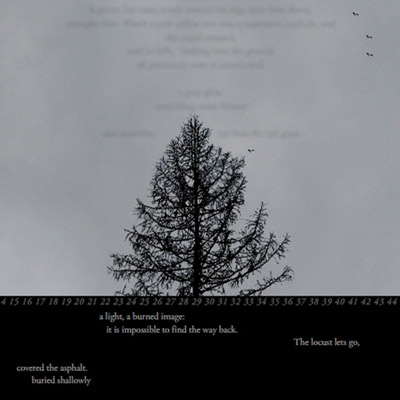
by Johannes Heldén
The theme of "Valjarna" is nature. As the work is loading, a quote appears: It's not safe out here. It's wondrous. The fog shifts to reveal a lone tree, a flock of birds scatter. A deep drone is sounding. When attempting to click on the birds different texts are activated. When managing to catch one of the birds, one of the previously dimmed texts will appear. The visually striking work entices the reader to work the interface to make texts appear; a work that requires patience. The poetic text, in Swedish, alongside the persistent droning noise invokes an eerie, almost threatening atmosphere. The image of the lone spruce and the circling birds seem to underscore a sense of doom. The texts echo the insistence on coupling the materiality of the work with the understanding of the materiality of language. "Valjarna" presents--in words and construction--an exploration of the defamiliarization and double nature of poetic language, in a new media form. The work also exists in an English version: "Elect".
"Sixty Morning Walks"
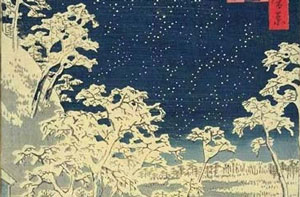
by Andy Fitch
For sixty consecutive days I began my morning with a sixty-minute walk through New York City. The departure point for these walks alternated between my apartment (uptown) in Harlem, and my girlfriend's apartment (downtown) in Tribeca. Each walk tracked shifts in the topographical and cultural landscape as I explored different neighborhoods and crosstown trajectories. After recent editorial engagement with constraint-generated poetic projects, I decided to recast each walk as a sixty-sentence prose block. The result borrows both from creative nonfiction (Bruce Chatwin's The Songlines, for example) and poetry (Lyn Hejinian's My Life). Visit "Sixty Morning Walks".
">>Oh<<"
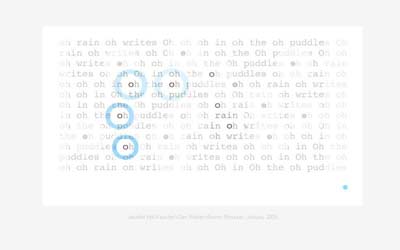
by Jennifer Hill Kaucher, Dan Waber and Reiner Strasser
">>oh<<" is a "concrete cyberpoem, an interactive audio-visual by Reiner Strasser. It is based on a visual poem by Dan Waber, created on a short poem by Jennifer Hill-Kaucher" (">>oh<<'s website"). Gray dots simulating the effect of rain fall on the page and by passing over them with the pointer an audible "Oh" sound is triggered and a ripple effect extends out from it, briefly illuminating the background text of the poem. The uncovered text and the voiced "Ohs" differ between dots and when one has moused over each one a blue dot appears. When clicked, like a fresh rainfall it washes the entirety of the poem's background text into view.
This work can be accessed at >>oh<<.
"Sea and Spar Between"
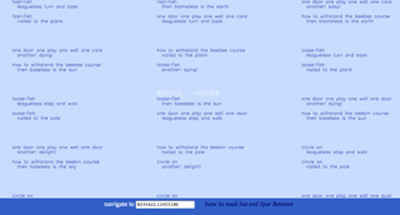
by Nick Montfort and Stephanie Strickland
"Sea and Spar Between" is a poetry generator which defines a space of language populated by a number of stanzas comparable to the number of fish in the sea, around 225 trillion. Each stanza is indicated by two coordinates, as with latitude and longitude. They range from 0 : 0 to 14992383 : 14992383. To operate the system, you may
- press the spacebar to mark the stanza that is in the center of the screen of that moment, bringing its coordinates into the navigation box at the bottom in order to note them and return to this view
- click your mouse at the right edge of the screen to move right to a new region of texts (to increase the first coordinate); click your mouse at the bottom, left, or top to move similarly in
- tap the arrow keys to move the visible lattice of stanzas up, right, down, or left by a single
- scroll the wheel on your mouse or tap the A and Z keys on the keyboard to zoom in and out
- type a pair of coordinates into the navigation box at the bottom and press enter to move anywhere in the sea of text
This work can be accessed at Sea and Spar Between.
"Sound Poems"
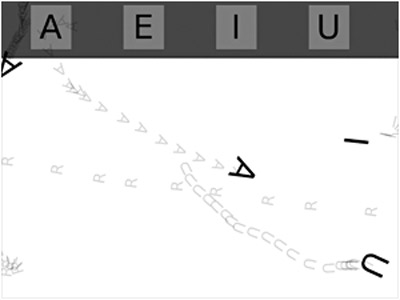
by Jörg Piringer
Piringer, an accomplished programmer and concrete poet in the tradition of the Swiss concretists, has produced a wide variety of work over the past decade, including a compelling group of abstract text videos, apps for the iPhone, and visual/audio materialenacted live in VJ-like contexts. soundpoems investigates what it would be like for individual letters, and the sounds associated with them, to be automata in the Flatland of the screen. Like Neil Hennessy's JABBER, "Sound Poems" often invokes the basic computer experiment, the "Game of Life," allowing letters to interact, reject each other, eat each other, etc. based on the principles of a few simple algorithms.
This work can be accessed at SOUNDPOEMS.
"Stud Poetry"
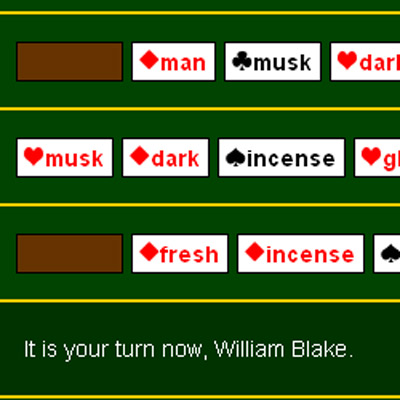
by Marko Niemi
"Stud Poetry" is a poker game played with words instead of cards. Your goal is to build as strong a poetry hand as you can and, of course, to win as much money as you can. Stud Poetry is a game of courage and faith, and a bit of luck, too. To become a great master of "Stud Poetry," you need to believe in the power of words, their magic capability to move mountains, minds, and souls. Surely it won't be easy, but when you finally have won all the money with your wonderful five-word poetry hands, you'll know it's worth it.
This work can be accessed at Stud Poetry.
"New Word Order"
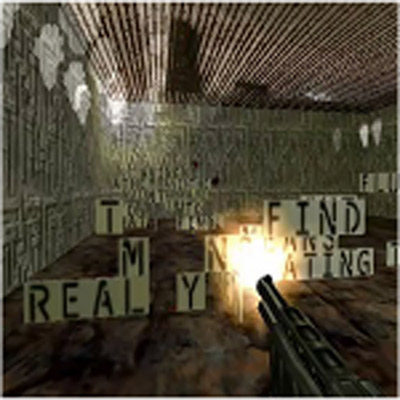
by Sandy Baldwin
"New Word Order: Basra [NWO]" is a mod for the game Half-Life, consisting of a playable map and custom textures. Gaming is the largest demographic of new media usage, and Half-Life stands out for its combination of first-person shooter action and compelling story. It remains the most popular online multiplayer game. Every object in Half Life is either shootable or background. What if the objects are words? How does language play into your interactions in the violent world of the game? The text in "NWO" is composed of phrases from "Introduction to Poetry," a short poem from former US Poet Laureate Billy Collins. The thematic violence in Collins' poem resonated through the creation of "NWO" in early 2003, during the second invasion of Iraq. When you enter the map you see words hanging in the air. You can jump and climb on them, you can run along the tops, you can keep playing and wandering in the space. You soon attack the words. You use the broken words as a reduced and processed writing. Break the words, destroy the letters. "NWO," along with every game and every image, is about the re-circulation of bodies and interpretive agendas.
This work can be accessed at New Word Order: Basra.
"WhereAbouts"
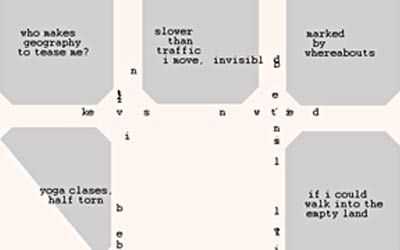
by Orit Kruglanski
"WhereAbouts" is an interactive poem about urban life. It juxtaposes planning and order with movement and chaos. The neatly planned and perfectly ordered design of poetry in the form of short verses gives way to the busy ant-
like rush of letters in the changing streets designed by the reader, as she drags around the "example" blocks as she pleases. The planned and recognizable city now disappears, and another city emerges, one composed of the bustle of the letters that inhabit it, even as they hurry to leave the screen.
This work can be accessed at Whereabouts.
"Chroma"
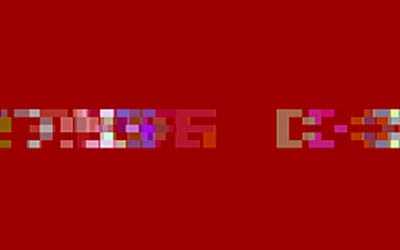
by Erik Loyer
"Chroma" is an interactive serial that examines issues of racial identity in virtual
environments through a tightly choreographed combination of graphics, voice and music. Three digital explorers are tasked by their mentor with the creation of avatars that will enable exploration of a newly rediscovered "natural cyberspace" humans long ago lost the ability to access. Conflict arises when one character pauses to question the wisdom of blindly forging ahead with human representation in the digital world. Interactive real-time animations are used to represent the thoughts and feelings of the
main characters, and respond to the user in intimate ways that help to illuminate the unfolding story while building emotional connections with its central players.
This work can be accessed at Chroma.
"Family Tree"
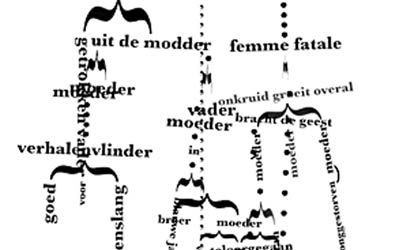
by Rozalie Hirs and Harm Van Den Dorpel
The digital project, "Family Tree," is conceived as a mobile responding to two forces: wind and gravity. The reader/listener conjures these at will by moving the mouse: left and right to create movement through wind in the horizontal
plane, and up and down to apply the force of gravity and create a vertical movement along the family tree. In this way, the reader/ listener shapes the reading experience, causing the text to move and rearrange itself on the digital page.
Family Tree can be regarded as an exercise of memory, investigating stories told and our ever-changing recollection of them, as well as a path towards some kind of source DNA: stories mix, converse and change, as people from different places and times are faced with each other. This imaginary space is flexible and open to new possibilities.
This work can be accessed at Family Tree.
"Pieces of Herself"
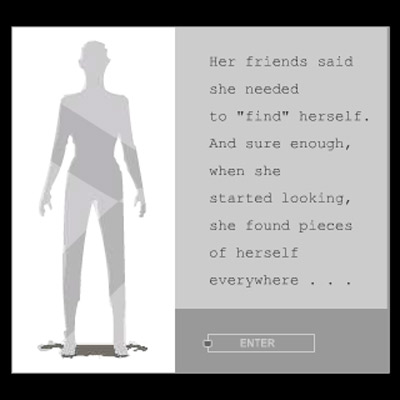
by Juliet Davis
"Pieces of Herself" is an exploration of feminine embodiment and identity in
relationship to public and private space. Using a drag-and-drop game interface, viewers scroll through familiar environments (e.g., domestic, outdoor, work) to collect metaphorical "pieces" of the self and arrange them in compositions inside the body. As each piece enters the body, it triggers audio clips from interviews with women, music loops, and sound effects, resulting in a layered narrative. The project,
which was inspired by Elizabeth Grosz's theories about embodiment, comments on social inscription of the body. The environments are composites of more than 400 photographs; the pieces include 40 vector drawings, and the audio clips include segments.
This work can be accessed at Pieces of Herself.
"Cruising"
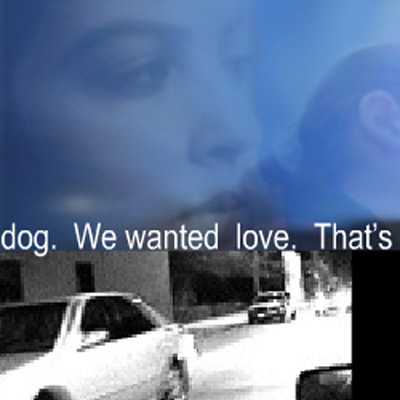
by Ingrid Ankerson and Megan Sapnar
On one level, "Cruising" is an excited oral recitation of a teenager's favorite pastime in small town Wisconsin, racing up and down the main drag of Main Street looking to make connections, wanting love. But by merging the linear aspect of the sound recording with an interactive component that demands a degree of control, "Cruising" reinforces the spatial and temporal themes of the poem by requiring the user to learn how to "drive" the text. A new user must first struggle with gaining control of the speed, the direction, and the scale in order to follow the textual path of the narrative. When the text on the screen and the spoken words are made to coincide, the rush of the image sequence is reduced to a slow ongoing loop of still frames. The viewer moves between reading text and experiencing a filmic flow of images — but cannot exactly have both at the same time. In this way, the work seeks to highlight the materiality of text, film, and interface.
This work can be accessed at Cruising.
"Shy Boy"
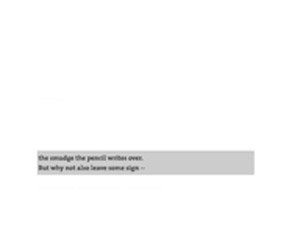
by Thom Swiss
"Shy Boy" is, like all of my born-digital work, a collaboration between myself and artists working in design, animation, and sound. For what it's worth, the boy in this piece is a version of my own son when he was in late elementary school. Like many new media poems, this one is an experiment in both how to read and how to listen. Its pacing and animated erasures are meditative and intended to be so quiet as to be nearly "under the radar."
This work can be accessed at Shy Boy.
"Animalamina"
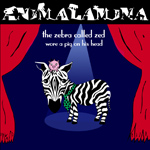
by Chris Joseph
"Animalamina" is a collection of interactive digital poetry for children, designed to introduce a younger audience to a variety of styles of digital poetry, animation and interaction through the traditional format of an animal A-Z. The poems are hidden in 26 interconnected scenes, and progress is rewarded by the ability to jump back to that scene at any point. Each scene has been designed to be different from the others in the style of narration, illustration and interaction, to create a series of unique environments that are exciting to uncover.
This work can be accessed at Animalamina.
La Resocialista Internacional
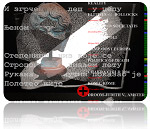
by Andreas Maria Jacobs
La Resocialista Internacional intends to criticize the superficial and mundane policy towards visual experiences and tries to bridge the gap between cinema and internet. In doing so I am developing a kind of "Cinematographic Scraps," which either find their way as stand alone artworks or as experimental leftovers. It also serves a political purpose in misleading the audience, pointing them to the "wrong" direction in a Situationist / Debordian way. It is sourcing information regarding the border between sane and insane, correct and deviant etc, etc.
This work can be accessed at La Resocialista Internacional.
Anthropoetry Centerpiece
by Brian Idle
Brian Idle is a professional recording artist, a publisher, an artist, and a talented singer and Latin percussionist. He also works as a multimedia consultant. His other works can be found by visiting Brian Jerome Idle.























